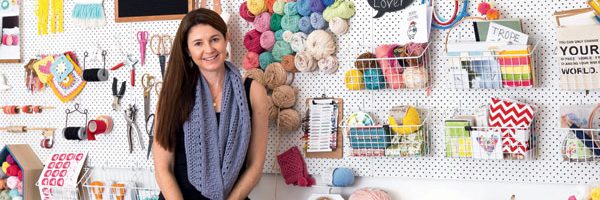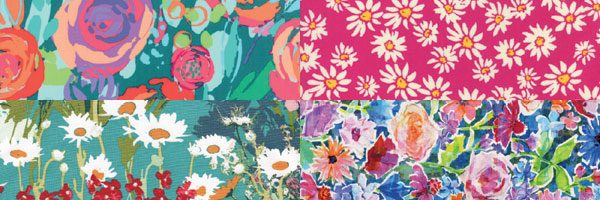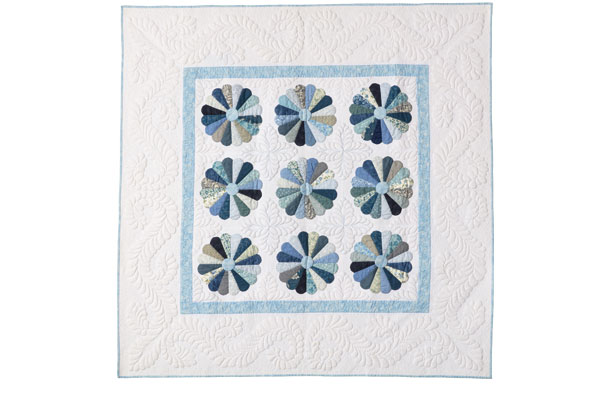
Quilting Advice from Deborah Louie: Formal Feathers
In this issue, I continue to explore the possibilities of feather quilting. I have previously discussed the hook and open feather — both are a more modern style of quilting feathers on your quilts. Another option in the feather family is the formal feather. This involves backtracking, stitching over the top of the previous stitching to move forward. It takes time to master, but the effect is wonderful. This style of feather is the closest in appearance to hand quilting in my opinion.
When I started quilting with formal feathers, I used pre-purchased stencils. I purchased a vast collection many years ago, which I still use today. They are a fantastic learning tool to use. You really get the feel of quilting the feathers on a quilt as there is a certain flow to stitching feathers when the marking is already on the quilt. You will worry less about the size and shape of your individual feather shapes as you have the accurate lines of the stencil to follow. The designs can be as simple or elaborate as my two plastic stencils below. Scout around your local patchwork shops for stencils or online. Books are also brilliant sources of knowledge and these are a few of my favourites on this subject.
All the quilting I will be showing you in this article is with the free-motion technique. To set up your machine, use an open toe, free-motion foot, feed dogs disengaged and stitch length of 0. Set the machine on slow to medium speed if you can adjust machine speed. Mostly I have used a 50-weight cotton thread in the top and in the bobbin. If you have not done this style of quilting before, perhaps get some scrap fabric and batting to practise on for a while, gliding the fabric smoothly while the needle is moving.
Drawing traditional formal feathers
I have drawn four individual feather shapes — A, B, C and D — for you so we can start designing our own feather designs. Trace these four shapes onto template plastic and cut out on the line.
To start drawing this design on paper, refer to Diagram 1. I first drew two lines 4in apart, then added a centre spine line and marked this at 1in intervals along the line. I wanted a travelling up feather, so I took Template C and started at the bottom of the centre line. I placed the narrow, pointed end on the bottom of the line and traced around the shaped end of the plastic C Template. I then moved the template up, placing the pointy end on the next 1in mark, and drawing from the spine around the shape, I stopped when I reached the curve of the previous feather. This technique is then repeated up the length of the spine. See how they fit into one another with just 1/8in breathing space on the sides. To draw the feather on the right side of the spine, use the template right side up; for the left side, turn the template over to mark the feathers. Draw your own feather and then transfer your design to your light-coloured fabric to make a test sample for quilting.
Learn how to hand knit a pair of socks with designer Jo Sharp
For Sample 1, I traced the pattern on the fabric for a travelling up feather and started stitching at the bottom of the left-hand side. I stitched the first feather to the spine, then carefully stitched right back on top of the previous line of quilting (backtracking). When you reach the curve of the next shape, the stitching goes up and around the next feather. Backtrack again, then continue all the way carefully up to the top. This is a slower technique as we really want these stitches on top of each other. But what a look. The backtracking is darker and makes the individual shapes sit strong. I love it!
On the other side I again worked bottom to top, but this time I did not backtrack — I stitched them with a small gap between the feathers so you can really see the difference. Both styles are lovely; the choice is up to you and what you think is the right pattern for your quilt. This #1 sample was stitched with 50-weight cotton thread in the top and bobbin.
Sample 2 is the same design, just drawn and stitched top to bottom, making it a travelling down feather. I used 100-weight polyester threads. The backtracking is not as evident, so fine thread makes backtracking easier. And if this was lilac thread on lilac fabric instead of charcoal, well, so much the better. Also, I had a bit of fun on the right-hand side adding shapes and elements inside, so backtracking sometimes is not necessary at all.
With sample 3 I just winged the whole design. No tracing, except for the centre line. I loved stitching this one, varying the shapes and sizes and adding tendrils and extra line work inside each feather. I travelled down the left-hand-side spine first, then worked up the left-hand side to the top, then down the spine again, leaving a 1/6in gap. Then I went all the way to the top again, having fun. With time and practice you will find confidence and your own style. Just relax and let it happen.
Order of quilting
The order of quilting is important and does not matter if you have a straight spine or curves, one size feather shapes or lots of different shapes. Diagram 2 demonstrates the direction and order of stitching.
I then enjoy taking the basic concept and designing new patterns for different quilt situations. A lovely curved border design (Diagram 3), a triangle design starting with a heart (Diagram 4), a wedding ring quilt would be stunning with the curved spine and just the small A Template feather (Diagram 5 and 6). These designs would be best suited with the formal, backtracking technique. If you find that your designs are not continuous, end a run with little stitches. Then lift the free-motion foot and find the next long quilting section, start the next line with anchoring stitches and cut floating threads at the end.
Discover Chris Jurd’s striking, scrappy quilt pattern
There is a huge resource of free designs on Pinterest and online. If you download a free design, or decide to use a design from one of your books but you’re not sure how to apply it to your quilt, I have a simple and inexpensive solution. Trace the design onto greaseproof kitchen paper, pin this on your fabric and then with a CLOSED, toe free motion foot quilt over the lines, slowly moving your hand so a small stitch is made. This is then easier to tear the paper away as below.
To finish off, I have quickly quilted both the open and formal feathers for you as an all-over design, with echoing around each side to travel on to the next feather. Fun, fast and looks terrific as a background fill around appliqué.
So, I hope you enjoyed playing with formal feathers. Have a go and have fun stitching.
Happy quilting,
X Deb
If you would like to know more about free-motion quilting, visit my website, www.deborahlouie.com.au, for machine quilting online workshops.

